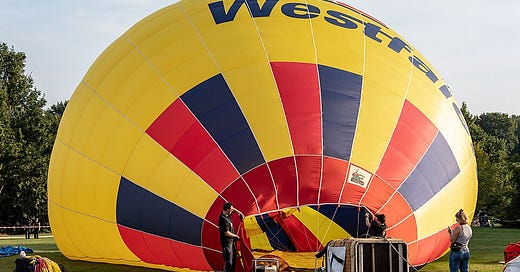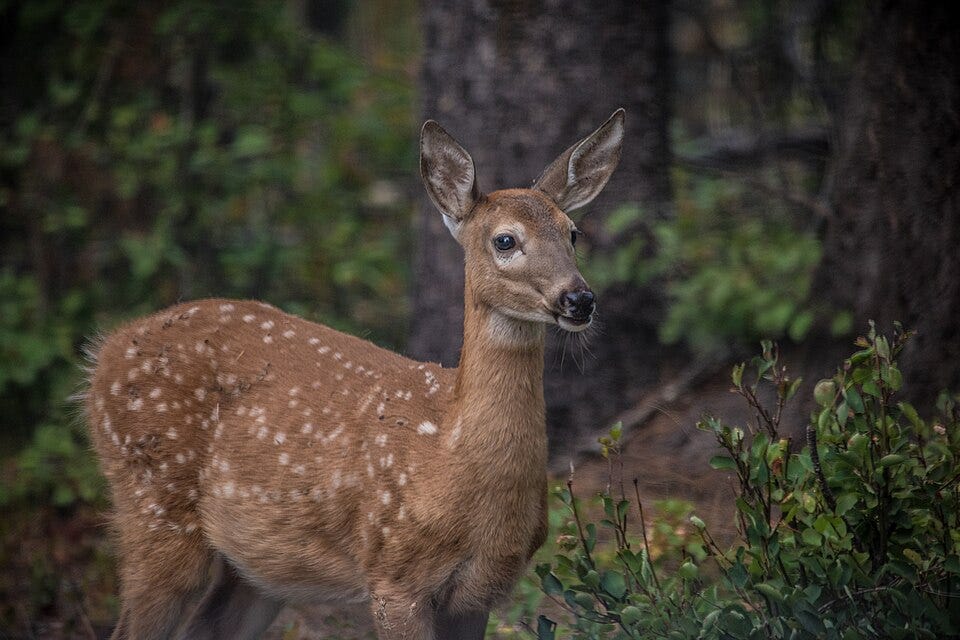What I learned this past week: Deer habits and balloon pilots
Does the phrase "nub city" mean anything to you?
I've once again let this newsletter collect some cobwebs for a while. I have no excuse besides the general calamity of daily causing a persistent nihilism. Life goes on! As does my under/unemployment. Anyway, I'm going to try out a new little series where I share some interesting things I learned throughout the past week. I have questions about everything always, and have a tendency to look stuff up mid-conversation, a trait shared by everyone in my family (the clarity with which I can hear my mom yelling "Google it!" in the middle of a debate at the dinner table).
I think this will be a fun way to keep track of all the random facts I learn and share them so that you too can be at a party and during a lull in the conversation, say something like "Did you know that one of the oldest methods of tanning deer hide involves using the deer's own brain fluid?" Come on, it'll be fun!
I am guilty of starting and abandoning projects big and small, so maybe I will do this once and forget about it, but maybe you'll see it every week! It's out of my hands somehow. Anyway, here's what I learned this past week.
Crepuscular
I learn new words all the time, but retaining them is a different story. I'm reading a book on deer called The Age of Deer: Trouble and Kinship with Our Wild Neighbors by Erika Howsare, and in it, she mentions that deer are crepuscular — as opposed to nocturnal or diurnal — meaning they are most active during dawn and dusk. House cats are crepuscular, as are big cats like jaguars, as well as skunks, bears, and Amazon river dolphins.
I've learned so much about deer from this book, including the aforementioned brain-tanning. I've also learned that some states have deer compost facilities to help mitigate roadkill bodies (otherwise they may go to a landfill). In some parts of the U.S., deer almost went extinct in the early 20th century, and the population was revived by moving in deer from other states. The phrase "beyond the pale" comes from medieval walls, called pales, built to keep deer out.
How to become a hot air balloon pilot
Hot air balloons came up in a conversation with friends, and we got to wondering how hot air balloon piloting works, like who accredits that type of thing? You couldn't pay me to go in a hot air balloon (women don't belong in balloons) but I did look into it and learn that you have to have either a pilot's license or an airman's certificate, which is actually comforting because I pictured a specific balloon-only license. You also need something called a Lighter-Than-Air certification, which is the actual official name for the category of aircraft that includes blimps and balloons.
Nub City
I haven't been able to get the phrase "Nub City" out of my head since Bobby Finger talked about it on Who? Weekly as the inspiration for Errol Morris' Vernon, Florida, which I haven't watched yet (but it is on YouTube in full). Morris originally wanted to make a documentary called Nub City, the nickname for the town of Vernon because it once had an excessively high rate of insurance claims for limb amputation.
Allegedly, seemingly, people in the town were committing insurance fraud by amputating their own limbs and then getting insurance payouts. Morris went down to Florida to make a documentary about it all, but the amputated residents were so hostile and threatening toward him and his crew — the son of one amputee beat Morris up — that he decided to just make a documentary about the non-amputated residents instead. You can watch him talk about it in detail here. Unfortunately, my brain keeps saying "nub city" to the tune of "rack city."
That’s what I learned this past week. Thanks for reading!





